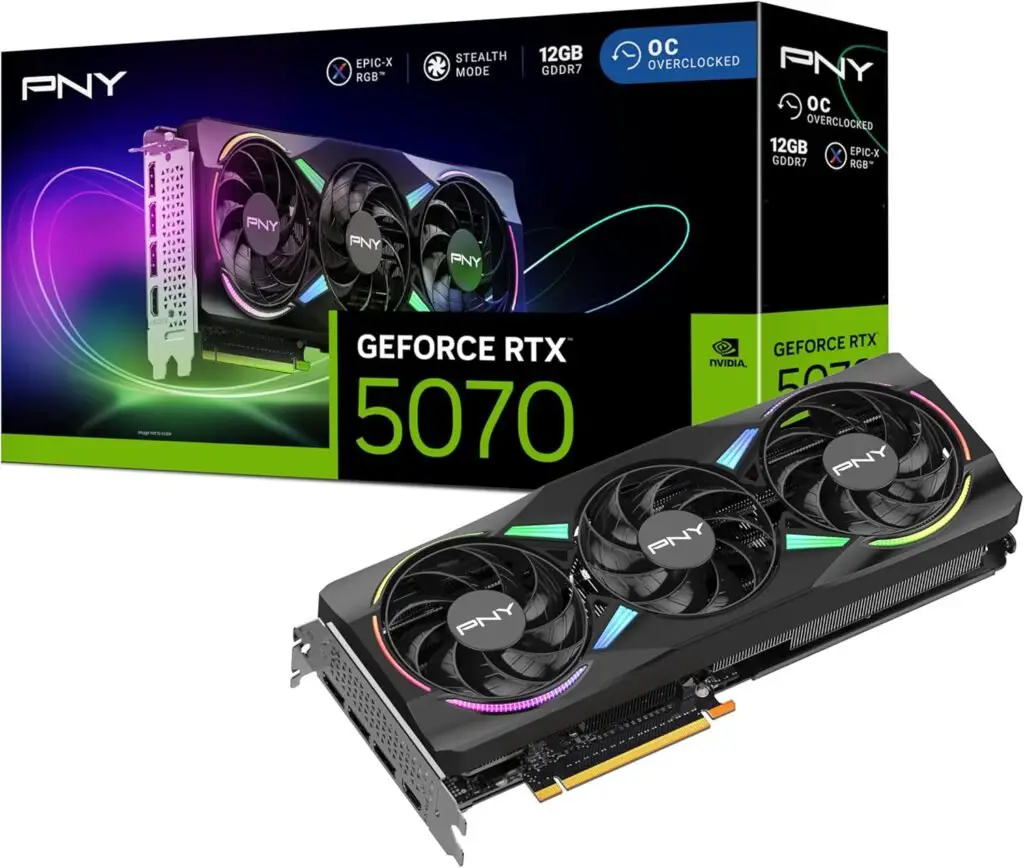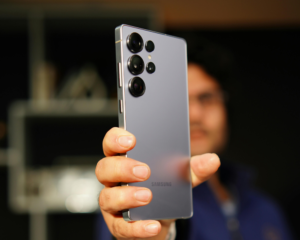Nvidia AMD Chip Comparison 2025 is one of the most talked-about topics in the tech world right now, and for good reason. With both Nvidia and AMD launching their most advanced chips to date, gamers, creators, and AI professionals are asking the same question: which one is the better choice this year? In this detailed guide, we break down every important aspect of the Nvidia AMD Chip Comparison 2025, covering gaming performance, AI capabilities, creative workloads, pricing, and overall value for money.
Whether you’re building a high-end gaming PC for 4K ray tracing, setting up a cost-efficient workstation, or deploying AI infrastructure, the Nvidia AMD Chip Comparison 2025 will help you decide which brand’s technology aligns with your needs. Nvidia brings its new RTX 50-series and Blackwell AI accelerators, pushing the limits of performance and software support. AMD counters with its latest Radeon GPUs and Instinct MI350 series, delivering impressive efficiency, competitive AI performance, and excellent price-to-performance ratios.
By the end of this Nvidia AMD Chip Comparison 2025, you’ll know exactly which chip family offers the features, speed, and value that suit your goals—whether for gaming dominance, AI innovation, or a balanced mix of both.
Quick Overview – Nvidia AMD Chip Comparison 2025
- Gaming (4K with ray tracing): Nvidia still holds the crown at the very high end with its latest RTX 50-series cards and DLSS Frame Generation, while AMD offers excellent performance for lower cost in rasterized games.
- Midrange GPUs: Both companies have compelling options in the $300–$600 range, with AMD focusing on value and Nvidia bringing more AI-enhanced features.
- AI and Data Center Chips: Nvidia’s new Blackwell B200/GB200 dominates in raw AI processing power, but AMD’s Instinct MI350 series offers competitive performance at better efficiency in certain workloads.
What’s New in 2025 Gaming GPUs
Nvidia – Blackwell for Gamers
Nvidia’s 2025 lineup introduces the RTX 50-series, including the flagship RTX 5090 and its slightly more affordable sibling, the RTX 5080. These GPUs bring massive gains in ray tracing performance, higher CUDA core counts, faster memory bandwidth, and DLSS Frame Generation for smoother gameplay. Midrange cards like the RTX 5060 and RTX 5050 target mainstream gamers, offering excellent performance at 1440p and competitive pricing if you shop smart.
AMD – Radeon’s Latest Generation
AMD’s newest Radeon lineup focuses on price-to-performance value. Cards like the RX 9070 and RX 9060 excel in 1080p and 1440p gaming, while still holding their own in 4K with the help of FSR (FidelityFX Super Resolution). They’re generally more power-efficient at midrange levels and often come in at lower prices than Nvidia equivalents.
Gaming verdict for 2025:
If you want absolute maximum performance for 4K gaming with ray tracing, Nvidia wins. For players who want solid gaming power without paying a premium, AMD offers excellent value.
AI & Creative Workloads (Desktops and Laptops)
- Nvidia: Known for its CUDA ecosystem, Nvidia dominates AI-related workflows in creative software like Blender, Adobe Suite, and AI video tools. RTX 50-series GPUs come with updated Tensor Cores, faster encoding/decoding, and DLSS acceleration in creative apps.
- AMD: Radeon cards are catching up fast with better OpenCL/Vulkan support and competitive rendering times. AMD’s mobile chips with Ryzen AI deliver strong on-device AI performance, making them a great choice for lightweight AI workloads.
Creative verdict: If your tools require CUDA or you’re heavily invested in Nvidia’s AI software stack, choose Nvidia. If your apps are more open-standards friendly and budget is a concern, AMD is a smart pick.
AI and Data Center Power – Blackwell vs. Instinct
Nvidia Blackwell B200/GB200
Nvidia’s Blackwell architecture brings major improvements for AI, including support for FP4 precision and second-generation Transformer Engines. The GB200 NVL72 configuration combines dozens of GPUs in a liquid-cooled setup for massive AI training and inference at scale. This is the go-to choice for cutting-edge AI research and large model deployment.
AMD Instinct MI350
AMD’s Instinct MI350 series focuses on delivering competitive AI acceleration at a lower total cost of ownership. With better energy efficiency in certain workloads and expanding ROCm software support, the MI350 is becoming a serious alternative for enterprise AI infrastructure.
AI verdict: Nvidia still leads in ecosystem maturity and ultimate performance, but AMD is closing the gap for organizations looking to optimize performance-per-dollar.
Price, Availability, and Best Time to Buy
In August 2025, high-end GPUs like the RTX 5090 remain expensive and sometimes hard to find due to high demand. Midrange models from both brands are easier to get and often see discounts. AMD cards tend to drop in price faster, making them attractive for cost-conscious buyers. Nvidia cards hold their value longer, but they also deliver premium features that can justify the price.
Nvidia AMD Chip Comparison 2025 – Category Winners
- Best for 4K/RT Gaming: Nvidia RTX 50-series flagships
- Best for 1440p Value: Tie, with AMD edging out when prices drop
- Best for Power Efficiency: AMD midrange GPUs
- Best for AI at Scale: Nvidia Blackwell B200/GB200
- Best for AI Value: AMD Instinct MI350
Recommended Choices for 2025
- Ultimate Gaming Build: Nvidia RTX 5090 or RTX 5080 with a high-end CPU and 32–64GB RAM
- Midrange Gaming Build: AMD RX 9070 or Nvidia RTX 5060 depending on price
- Creative Workstation: Nvidia RTX 50-series for CUDA-heavy apps; AMD Radeon for budget rendering
- AI Research Cluster: Nvidia GB200 for maximum scaling; AMD MI350 for cost-optimized setups
FAQs — Nvidia AMD Chip Comparison 2025
Q: Did Nvidia’s next-gen gaming cards actually launch in 2025?
A: Yes—top-end RTX 50-series cards are in market, with regional variants like RTX 5090 D V2 in China to meet export rules.
Q: Is AMD releasing true Nvidia killers this year?
A: AMD’s newest Radeons compete fiercely on price/performance, especially below the flagship tier; at pure 4K/RT extremes, Nvidia still leads.
Q: For AI, is Blackwell really that much faster?
A: At cluster scale, GB200 NVL72 introduces major inference/training speed-ups via FP4 and 5th-gen NVLink; AMD counters with MI350 gen-over-gen leaps and maturing ROCm.
Final Verdict: Nvidia AMD Chip Comparison 2025
After exploring performance, pricing, AI capabilities, and gaming benchmarks, the Nvidia AMD Chip Comparison 2025 makes one thing clear—both brands are stronger than ever. Nvidia’s RTX 50-series GPUs and Blackwell AI accelerators dominate in raw power, ray tracing, and CUDA-dependent workloads, making them the top choice for gamers chasing ultimate 4K performance and AI professionals who need the most advanced hardware.
AMD, on the other hand, continues to shine in price-to-performance value, energy efficiency, and increasingly competitive AI performance with the Instinct MI350 series. For budget-conscious gamers and organizations seeking high performance without the premium cost, AMD’s offerings in the Nvidia AMD Chip Comparison 2025 are extremely compelling.
The right choice depends on your goals: choose Nvidia for bleeding-edge gaming visuals and unmatched AI scalability, or choose AMD for exceptional value, efficiency, and strong all-around performance. In 2025, both brands have raised the bar, giving consumers and professionals worldwide more power, choice, and innovation than ever before.
No matter which side you pick in the Nvidia AMD Chip Comparison 2025, one thing is certain—you’ll be investing in some of the most advanced technology available today.
[ratings]







